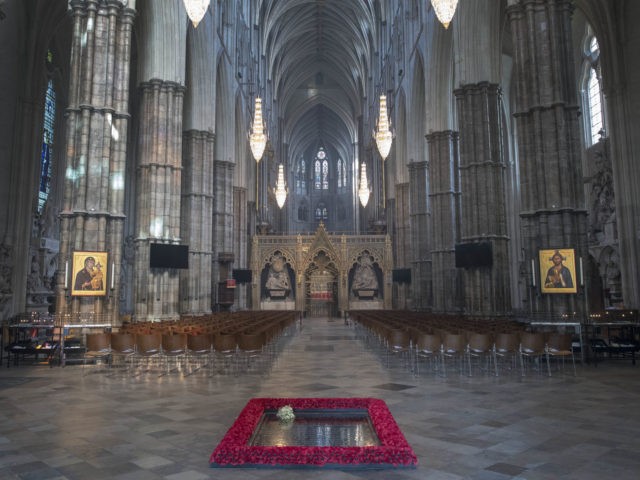The Unknown Warrior — the nameless, unidentified body interred in London’s Westminster Abbey to represent all the soldiers killed during the Great War — was probably a white person chosen because of ‘unconscious bias.’
This, I learn from a bizarre story published in the newspapers at the weekend, is the conclusion of curator Justin Saddington at the National Army Museum in London, as part of his research for an exhibition on Warriors.
I find this puzzling: why do we need to know this? How did this story ever make it into the papers?
Let’s just briefly remind ourselves of the background.
In 1916, an army chaplain called David Railton conceived the idea of The Unknown Warrior after seeing a grave marked with a rough cross and the legend, scrawled in pencil, ‘An Unknown British Soldier’.
Four years later, bodies were exhumed from various battlefields and brought to a chapel near Arras, France. These remains were then put in four plain coffins, each covered with a Union flag. A brigadier with eyes closed then felt his way to one of the coffins – whose occupant was then selected for interment as the Unknown Warrior.
The body now lies in Westminster Abbey not far from the entrance, in soil brought from each of the main World War I battlefields.
The inscription begins:
Beneath this stone rests the body
Of a British warrior
Unknown by name or rank
Brought from France to lie among
The most illustrious of the land
What, exactly, does race have to do with this strange, moving, fascinating story? How was it ever allowed to get sullied with the ugly, divisive issue of identity politics?
It is a blindingly obvious, well-documented fact that the vast majority of British soldiers who fought in the First World War were white. It seems extremely likely, on balance of probability, that any corpses exhumed from battlefields two years after the war had ended were also white.
Yet suddenly, mysteriously, this has become contentious.
Here is an excerpt from the Telegraph article – and reported elsewhere – which turned this non-event into a story.
Minutes of meetings of the Memorial Committee tasked with creating the first ever “tomb of the unknown soldier”, Mr Saddington has found, show that Indian and other soldiers were not mentioned.
The more ingrained racial biases of the time may have had a bearing on how the dead were commemorated, the research suggests.
He told The Daily Telegraph: “That should be taken as evidence of unconscious bias really, that fact that they’re not discussed
“This is a time 100 years ago when racism was much more ingrained, there was in fact a colour bar for black officers
“There are wider issues with race, and this boils over into commemoration as well.”
The National Army Museum in Chelsea is one of the few museums — indeed possibly the only museum — in London that has not fallen victim to woke directors imposing their trendy left-wing narratives on the collection. This is because its director — Justin Maciejewski — was formerly Director Combat (professional head of the Royal Armoured Corps and the Infantry) and won a DSO as a battalion commander in Iraq, and is therefore unlikely to put up with such nonsense.
One illustration of this is that the National Army Museum was the first museum in the whole of London to re-open after the government’s lockdown. The director tells me this is because he wanted to set an example — and that, given his museum’s subject matter, he thought it really ought to take the lead in showing courage.
So I can understand his disappointment and bemusement that a new exhibition on the history of the Unknown Warrior — a tale of courage, sacrifice and sensitivity to the widows, bereaved parents and orphans who had lost their loved ones in unmarked graves — should instead have been hijacked by a story about identity politics.
When I spoke to Maciejewski his main concern was to defend his excellent curator (whose research, he believes, has been twisted in the newspaper reports) and to stress how proud he is of the exhibition and the way it tells an ‘amazing, patriotic and lovely story’ about the unknown British soldier who now lies beneath the flags of Westminster Abbey ‘buried among kings.’
What’s particularly disappointing is that this non-story was promoted in two notionally conservative newspapers, the Sunday Telegraph and the Mail. They are indulging a hateful hard left narrative — which very few of the people in Britain or elsewhere actually believe in — that every period of history must now be viewed through a filter of modern identity politics.
Of course, the Unknown Warrior is likely a white British soldier. There is no shame in this. Shame on anyone who attempts to argue otherwise.

COMMENTS
Please let us know if you're having issues with commenting.